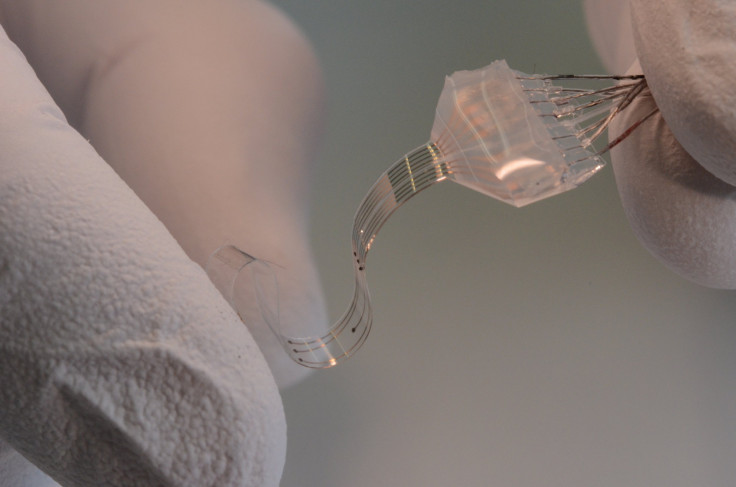Flexible Spinal Implant May Be Future Of Paralysis Treatment; Helps Paralyzed Rats Walk Again

Although any kind of injury is bad, spinal cord injuries (SCI) might just be the scariest. Our spines are an information superhighway for nerves and their signals, which travel to the rest of the body. Just one strong blow to the back can be enough to offset vertebrae, which can tear or push into the spinal cord tissue, and just like that a person can be left paralyzed. It’s estimated that about 12,500 people will have a SCI each year, and 41 percent of them will end up either paralyzed from the waist down or throughout. After years of research, however, Swiss scientists are finally on track to giving these people their lives of movement back, with the help of elastic electrical spinal implants.
Scientists at Ecole Polytechnique Fédérale de Lausanne (EPFL) in Switzerland have been working on spinal cord implants for quite some time now, but a major roadblock for them has been maintaining flexibility akin to the spine. Current iterations of spinal cord implants are rigid and unable to move around if, for example, you’re bending down to tie your shoe. Over the course of a few days, these implants begin to rub against spinal tissue, causing inflammation and scar tissue build up. Eventually, the body rejects the implant.
The team’s new implant is called e-Dura. It’s named after the dura mater — one layer of the protective membrane that surrounds the spinal cord and brain — under which it’s placed. By using elastic silicone and cracked gold wiring, which created a mesh-like structure, the researchers were able to give it flexibility comparable to that of the nerve tissue surrounding it. And after two months of having the implant in their spines, paralyzed rats were able to walk, run, and jump without damage or rejection.
“This is quite remarkable. Until now, the most advanced prostheses in intimate contact with the spinal cord caused quite substantial damage to tissue in just one week due to their stiffness,” Dr. Dusko Ilic, from King’s College London, told the BBC. He was not involved in the study. "The work described here is a groundbreaking achievement of technology, which could open a door to a new era in treatment of neuronal damage.”
For the study, the researchers first tested the e-Dura against a stiffer implant and surgery alone, and found it was safe for the rats’ bodies without any adverse reactions. Then they inserted the implant in the rats’ motor cortexes to determine which signals indicated an intention to move their legs, and found that the device could indeed read signals, Live Science reported. Finally, they tested the device again on a group of paralyzed rats, finding that they had the ability to walk again after eight weeks, albeit with the help of an external stimulator which connected to the device with wires.
The team still has a long way to go if they want to bring this technology to humans. One of the first things they need to work on is getting the device to work independently of an external stimulator, which provides the signals for movement. "Translation of experimental treatments to humans often falters because insufficient attention is given to some of the more pragmatic aspects of translational science,” Dr. Mark Bacon, scientific director of the UK charity Spinal Research who wasn’t involved in the study, told the BBC. "The combination of electrical and chemical stimulation has been proven in principle — in animal models at least — so it is encouraging to see the application of multidisciplinary efforts to take this one step closer to safe testing in patients."
Source: Minev I, Musienko P, Lacour S, et al. Electronic dura mater for long-term multimodal neural interfaces. Science. 2014.
Published by Medicaldaily.com



























